有中文本
- 作者: Walton, Sam/ Huey, John (CON)
- 原文出版社:Bantam
- 出版日期:1993/06/01
- 語言:英文
富甲天下:Wal-Mart創始人 山姆.沃爾頓自傳
Sam Walton, Made in America: My Story
經營理念[編輯]
山姆崇尚節儉的經營之道,相信由此帶來的價格最低符合消費者的最大利益。從5分至1角錢商店開始,他始終採用大眾化、低加價的零售經營方式,而這一點是通過日常管理中節省每一分錢達到的。例如,公司通常很少在店內或店外裝飾上花錢,也很少登廣告,對供應商則是一幅強硬的討價還價者形象。而無論公司以多麼低的價格購進商品,山姆堅持加價率絕不超過30%,即使比競爭者同樣商品的價格低得多,也要堅持將此利益讓給顧客,且決不放棄對顧客許下的任何商品都比競爭者價格低的諾言。
美國作家福利森在《如何成為億萬富豪》中指出,要成為億萬富豪,其中一大秘訣就是臉皮要鍛鍊得很厚。在解釋這條秘訣時,福利森是以山姆·沃爾頓為例的:他經常擾亂市場價格。一旦逮到機會,他便伺機向供應商殺價。所以供應商們都知道和沃爾瑪做生意不容易。因此,如果你想當好好先生,最好打消富豪夢。
山姆的「女褲理論」就是沃爾瑪營銷策略的最好說明:女褲的進價0.8美元,售價1.2美元。如果降價到1美元,我會少賺一半的錢,但卻能賣出3倍的貨。
在70年代,沃爾瑪的銷售收入和純收入以每年40%的速度增長著。營業收入和純收入分別在10年時間增長40倍和35倍。這使沃爾瑪一躍成為全美最年輕的年銷售收入超10億美元的區域性零售公司和成長最快的、領先的區域性折扣百貨公司。而八十年代則是沃爾瑪走向巨人的10年,在這十年內它保持了35%以上的年增長速度和不斷下降的經營成本,使它成為全國零售行業的巨人。
沃爾瑪的低成本主要依賴於以下幾個方面:
- 採取倉儲式經營。
- 加強與供應商的合作。
- 強大的配送中心和通訊設備作技術支撐。
- 嚴格控制管理費用。
- 減少廣告費用。
在用人上,山姆就是挑選那些精力充沛、樂於工作並忠於公司的人。沃爾瑪用人並不太注重學歷,很多員工包括經理都只是高中畢業。不少經理是從內部逐級提上來的,山姆相信個人的努力和誠意,並盡力保持與員工的大量個人接觸,這也許就是他在沃爾瑪的員工中享有很高的個人威望的原因。山姆的個人魅力鼓勵和維繫了員工和顧客對公司的忠誠和讚揚。
「讓顧客滿意」是沃爾瑪公司的首要目標。山姆有句名言:「請對顧客露出你的八顆牙。」在山姆看來,只有微笑到露出八顆牙的程度,才稱得上是合格的「微笑服務」。山姆還教導員工:「當顧客走到距離你10英尺的範圍內時,你要溫和地看著顧客的眼睛,鼓勵他向你諮詢和求助。」這一條被概括為「十英尺態度」,成為沃爾瑪的員工準則。還有沃爾瑪企業文化中「不要把今天的工作拖到明天」、「永遠提供超出顧客預期的服務」等規則,已寫進了美國的營銷教科書。
山姆開店堅守著一個信念,「只要商店能夠提供最全的商品、最好的服務,顧客就會蜂擁而至。」他向員工提出了兩條要求:「日落原則」和「三米微笑」。「日落」是指每個員工都必須在太陽下山之前完成自己當天的任務,而且,如果顧客提出要求,也必須在太陽下山之前滿足顧客;「三米微笑」是指,當顧客走進員工3米的範圍內時,員工就必須主動地詢問顧客有什麼要求,而且說話時必須注視顧客的眼睛。
他還為公司制定了三大基本信仰:「服務顧客」、「尊重個人」和「追求卓越」。遵循著山姆·沃爾頓的信念,沃爾瑪的連鎖店越開越多,並有折扣店、購物廣場山姆會員店和家居商店四種,全部由公司控股,實行直營連鎖。
不論是在生活上還是在事業上,山姆都保持著旺盛的鬥志。20世紀80年代早期,他已60多歲,每天仍從早上4:30開始工作,在清靜的環境中進行思考和計劃,直到晚上,偶然還會在某個凌晨4:00訪問一處配送中心,與員工一起吃早點喝咖啡。他常自己開著雙引擎飛機,從一家分店跑到另一家分店,每周至少有4天時間花在這類訪問上,有時甚至6天。在周末上午的上午會前,他通常3點鐘就到辦公室準備有關文件和材料。70年代時,山姆保持一年至少對每家分店訪問兩次,他熟悉這些分店的經理和許多員工,認真聆聽意見,通常他也會直接地提出他自己的一些看法。公司太大了,不可能遍訪每家分店,但他儘可能地跑。
另外,山姆在1983年又開辦了山姆俱樂部,這是實行會員制的商店,每個顧客只要交納25美元就可以擁有會員資格,以批發價格獲得大批高質量商品。可以說,山姆俱樂部的商品銷售利潤是微乎其微,僅為5%~7%,但這一超低價的實施帶來的卻是銷售額的大幅增加。目前,山姆俱樂部的銷售額已達100億美元,擁有217家分店和巨大的發展潛力。
山姆的工作精神影響了沃爾瑪中的每一位成員,為他們做出了榜樣。事實上,山姆也的確給每一位經理的肩上都壓上一副很重的擔子,因為他深刻地認識到沃爾瑪的快速拓展完全有賴於每一個成員盡心盡責地工作。他一方面對經理員布置高標準的工作任務,另一方面賦予其最大的權限和責任。鼓勵他們在工作中保持激情和活力,他知道,只有這樣才能最大限度地讓每一個人把潛力釋放出來,也只有這樣,才能讓每一個人為沃爾瑪做到最好,不斷繁榮沃爾瑪的生命。
山姆·沃爾頓的兒子,羅伯遜·沃爾頓是現任的沃爾瑪公司董事會主席,他認為,沃爾瑪取得成功,與獨特的企業文化密不可分。不管什麼時候,你只要走進任何一家沃爾瑪連鎖店,你肯定會找到價格最低的商品和你希望得到的真正的服務。在每一家連鎖店的每一個銷售間,你都會產生一種在自己家裡的感覺。這就是沃爾瑪的企業文化。
一個企業的創新和優化生產率,就是成功的法寶。山姆給連鎖業帶來的改革是不計其數的,他發明了條形碼、無線掃描槍、計算機跟蹤存貨等,如今已成為行業標準;他改變了傳統的進貨方式,他擁有最大的私人衛星網絡,當人們在跟著他的腳步,剛剛開始的時候,山姆已經又開始了下一步創新。儘管有些人認為沃爾瑪有一群瘋瘋顛顛的人,但了解沃爾瑪文化的人卻懂得它的用意,旨在鼓勵人們打破陳規和單調生活,去努力創新,「為了工作更有趣。」
說山姆·沃爾頓是沃爾瑪的靈魂,實在毫不為過。山姆不但親手創造了沃爾瑪,而且在將近30年的歲月里,一直親自領導它的日常業務,決定著它的發展方向,並以自己的風格、個性、理念深刻地影響著它,使沃爾瑪不僅創造了二戰後美國零售業的最大奇蹟,並且成為美國零售巨型公司中最有個性的公司。
沃爾瑪超市[編輯]
沃爾瑪是山姆·沃爾頓一生最大的成就,由他向岳父借的20,000美元及自己的5,000美元,經過28年,成為美國最大最大的零售商,證明了他的奮鬥經歷。從1945年,他在美國阿肯色州新港開設一家連鎖性質的零售店。這家店是從巴特勒兄弟特約的,是一家本·富蘭克林店。之後,大家都很喜歡光顧這家店,但在三年之後,因為地主P·K·福爾摩斯希望自己的兒子繼續經營這店,而不落在外人手上,便不再租出,而山姆便頂了這家店出去,而只收取50,000美元。
之後,在結束營業的一年中,他不斷尋找新的地點再重新開店。在本特維爾,他重新在1950年5月開店。在山姆買下這家店之前,它的營業額為72,000美元,但經過了五年的努力,營業額已有250,000美元。
在這成功之後,山姆便希望拓展業務,但他早已意識到店與店之間的距離是一個重要的問題,之後,便與他哥哥一起利用各種交通工具尋找適合的地點開店。因為處於二戰後的嬰兒潮,這樣的特價店十分受歡迎。1954年,他在密蘇里州堪薩斯城與家人在一個商場中開了大量各種商店,並且鼓勵店鋪管理層入股,使得他們更努力工作和學習。至1962年,他們家已經有16家商店分布在三個州。
1962年,在美國阿肯色州羅傑斯城開設第一家沃爾瑪百貨商店。因為堅持低價策略,沃爾瑪一開始就獲得很大的成功。第一年,本頓維爾的商店營業額就已經達到了70萬美元。之後,他很努力去尋找美國供貨商為他們提供價格低廉的貨品,以和進口商品競爭。而他觀察了其他同類商店,發現一站式購物模式有利可圖,從而加以發展。
和其他商店不同,沃爾瑪大部分都選擇在小市鎮建立,既可以減低租金成本,又可減少競爭對手。山姆亦十分重視物流和供應鏈,建立了龐大的運輸及倉存網絡。自此,發展更快,由1977年的190家店擴展到1985年的800家。
如今,沃爾瑪公司總部設在阿肯色州本頓維爾。為全球最大的公司(以營業額計算)。也是世界上最大的私人雇主,員工超過兩百萬,是世界上最大的零售商。沃爾瑪仍然是一個家族企業,其控股人為沃爾頓家族擁有沃爾瑪48%的股權。沃爾瑪也是在美國最大的食品零售商。2009年淨利潤為258億美元。目前,沃爾瑪在全球15個國家開設了超過8,000家商場,下設53個品牌,員工總數210多萬人,每周光臨沃爾瑪的顧客2億人次。
沃爾瑪在美國50個州和波多黎各運營。在墨西哥經營Walmex,在英國經營阿斯達,在日本經營西友百貨,並與印度巴提企業(Bharti)合資經營「最優惠價現代批發賣場」(Best Price Modern Wholesale)。全資擁有在阿根廷,巴西和加拿大的業務。沃爾瑪在北美以外的投資的業務:在英國,南美和中國的業務非常成功,而在德國和韓國的企業是不成功的。
沃爾瑪主要有沃爾瑪購物廣場、山姆會員店、沃爾瑪商店、沃爾瑪社區店等四種營業態式。
軼事[編輯]
有一次他答應如果公司業績出現飛躍,他會穿上草裙和夏威夷衫在華爾街上跳草裙舞。當年公司營業額的確超出了他的預料,於是他真的在美國金融之都華爾街上跳起了歡快的草裙舞,當時被報界大肆曝光。
儘管山姆成了億元富翁,但他節儉的習慣卻一點也沒變。山姆·沃爾頓第一次被《福布斯》雜誌列為全美富豪排行榜的首位是在1985年10月。山姆和沃爾瑪商店一夜之間成為全美公眾關注的焦點,大批記者擁向山姆的住地。然而,當他們看到這位美國第一富豪過著最簡樸的生活時,不禁大失所望:山姆穿著一套自己商店出售的廉價服裝,戴著一頂打折的棒球帽,開著一輛破舊不堪的小貨運卡車上下班,車後還安裝著關獵犬的狗籠子。
他沒購置過豪宅,一直住在本頓維爾,經常開著自己的舊貨車進出小鎮。鎮上的人都知道,山姆是個「摳門」的老頭兒,每次理髮都只花5美元——當地理髮的最低價。但是,這個「小氣鬼」卻向美國5所大學捐出了數億美元,並在全國範圍內設立了很多獎學金。
老沃爾頓的幾個兒子也都繼承了父親節儉的性格。美國大公司一般都有豪華的辦公室,現任公司總裁吉姆·沃爾頓的辦公室卻只有20平方米,公司董事會主席羅賓遜·沃爾頓的辦公室則只有12平方米,而且他們辦公室內的陳設也都十分簡單,以至於很多人把沃爾瑪形容成「『窮人』開店窮人買」。
https://en.wikipedia.org/wiki/Sam_Walton
Forbes ranked Sam Walton as the richest person in the United States from 1982 to 1988, ceding the top spot to John Kluge in 1989 when the editors began to credit Walton's fortune jointly to him and his four children.[36] (Bill Gates first headed the list in 1992, the year Walton died.) Wal-Mart Stores, Inc. also runs Sam's Club warehouse stores.[37] Walmart operates in the United States and in more than fifteen international markets, i
沒慈善事業
At the University of Arkansas, the Business College (Sam M. Walton College of Business) is named in his honor. Walton was inducted into the Junior Achievement U.S. Business Hall of Fame in 1992.[39]
Samuel Walton | |
|---|---|
 Walton, sometime between 1982 and 1990 | |
| Born | March 29, 1918 Kingfisher, Oklahoma, U.S. |
| Died | April 5, 1992 (aged 74) Little Rock, Arkansas, U.S. |
| Resting place | Bentonville Cemetery |
| Alma mater | University of Missouri (BS) |
| Occupation(s) | Founder of Walmart and Sam's Club |
| Spouse | |
| Children | |
| Relatives |
|
| Military career | |
| Allegiance | |
| Service/ | |
| Years of service | 1942–1945 |
| Rank | |
| Unit | Military Intelligence Corps |
| Battles/wars | World War II |
Samuel Moore Walton (March 29, 1918 – April 5, 1992) was an American business magnate best known for founding the retailers Walmart and Sam's Club, which he started in 1962 and 1983 respectively. Wal-Mart Stores Inc. grew to be the world's largest corporation by revenue as well as the biggest private employer in the world.[1] For a period of time, Walton was the richest man in America.[2] His family has remained the richest family in the U.S. for several consecutive years, with a net worth of around US$240.6 billion as of January 2022.
Early life[edit]
Samuel Moore Walton was born to Thomas Gibson Walton and Nancy Lee, in Kingfisher, Oklahoma. He lived there with his parents on their farm until 1923. However, farming did not provide enough money to raise a family, and Thomas Walton went into farm mortgaging. He worked for his brother's Walton Mortgage Company, which was an agent for Metropolitan Life Insurance,[3][4] where he foreclosed on farms during the Great Depression.[5]
He and his family (now with another son, James, born in 1921) moved from Oklahoma. They moved from one small town to another for several years, mostly in Missouri. While attending eighth grade in Shelbina, Missouri, Sam became the youngest Eagle Scout in the state's history.[6] In adult life, Walton became a recipient of the Distinguished Eagle Scout Award from the Boy Scouts of America.[7]
Eventually the family moved to Columbia, Missouri. Growing up during the Great Depression, he did chores to help make financial ends meet for his family as was common at the time. He milked the family cow, bottled the surplus, and drove it to customers. Afterwards, he would deliver Columbia Daily Tribune newspapers on a paper route. In addition, he sold magazine subscriptions.[8] Upon graduating from David H. Hickman High School in Columbia, he was voted "Most Versatile Boy".
李筱峰
〈人生三典範〉他小時候家境清寒,7歲就開始打零工了。稍長,他在農場裡擠牛奶、裝瓶,然後送牛奶。另外還送報和銷售雜誌。高中畢業時,他被評選為「最多才多藝的男孩」。大學畢業三天後即開始上班….。他自己都沒料到,最後(1982到1988)他被媒體列入美國最富有的人物。1998年還被《時代》雜誌列入「20世紀最有影響力的100位人物」。他的奮鬥史,給世人「英雄不怕出身低」的典範。儘管山姆·沃爾頓後來成了億萬萬富翁,但他節儉依然不變。1985年記者採訪這位全美首富時發現,山姆·沃爾頓是過著最簡樸的生活,他穿著一套自己商店出售的廉價服裝,戴著一頂打折的棒球帽,開著一輛破舊不堪的小貨運卡車上下班。他沒購置過豪宅,一直住在本頓維爾鎮上,經常開著自己的舊貨車進出小鎮。每次理髮都只花當地理髮的最低價5美元。這位自小窮苦長大致富的富豪,並沒有「由儉入奢」,又是人生的一樁典範!但他是小氣吝嗇的守財奴嗎?一點也不!這個對自己吝嗇的「小氣鬼」,卻向美國5所大學捐出了數億美元,並在全國範圍內設立了很多獎學金。這又是富豪人生關懷公義的典範!山姆·沃爾頓於1992年4月過世,他死後留下了沃爾瑪連鎖商店公司、山姆俱樂部倉儲式商店,沃爾瑪分布在美國和包括阿根廷、巴西、加拿大、智利、中國、哥斯大黎加、薩爾瓦多、瓜地馬拉、宏都拉斯、日本、墨西哥、尼加拉瓜、波多黎各和英國在內的國際市場。
Jack Weil
Aug 28th 2008
From The Economist print edition
Jack A. Weil, patriarch of western clothing, died on August 13th, aged 107

IN THE annals of fashion the snap-fastener, or press-stud, holds a humble place. Few care that it was invented in Germany, as the Federknopf-Verschluss, in the 1880s. Not many appreciate that some varieties have discs and grooves, while others boast sockets with studs. And almost no one considers that they give a man style. But Jack Weil did.
Mr Weil reckoned that a cowboy on a horse, if wearing a shirt with buttons, was liable to get snagged on sagebrush or cactus or, worse than that, get a steerhorn straight through his fancy buttonhole. He was pretty certain, too, that a cowboy losing a button would feel disinclined to sew it on again. The answer to all those difficulties was to make shirts with snap-fasteners. And for 62 years, in a red-brick warehouse in the LoDo district of Denver, Mr Weil did exactly that.
He also added a few more customisings. Pockets with sawtooth flaps, to keep tobacco in; a yoke fit, to broaden out the shoulders; body-hugging seams, to show the fine muscles of a cattleman; and deep cuffs. The hats, belts, buckles and bolo ties, which he also commercialised, were optional. But the snap-fasteners were de rigueur: topped with pearl and backed with tin, square or circular or diamond-shaped, strong enough to pass without cracking through the wringer of a 1940s washing-machine, and flash enough to turn heads on the streets of Denver on a Saturday night. “A cinch”, as Mr Weil proudly said.
Until he created his shirts, there was no distinctively western look in American couture. There were cowboys; but they wore dusty working clothes, accessorised with sweaty bandannas and clanking spurs, that no one much cared to copy. Indeed, Mr Weil early on in his career made work-gear for cowboys, and learnt an important fact: they had no money. If he wanted to make any money himself, he would have to appeal not to the catwalk instincts of cattlemen, which were hard to spot, but to wannabe easterner cowboys who lived in, say, New York. Fortunately, there were plenty of them.
His shirts, sold after 1946 through his company, Rockmount Ranch Wear, became extremely famous. The Premium Blue Flannel Plaid was worn by Ronald Reagan, and the Pink Gabardine by Bob Dylan. Eric Clapton liked the diamond-snap number; Robert Redford in “The Horse Whisperer” wore a rayon plaid. Mr Weil’s company clad Elvis Presley, John Travolta and almost everyone, gay or straight, in “Brokeback Mountain”. It also made the shirts, in red, white and blue, for the Colorado House delegation at this year’s Democratic convention. Mr Weil very narrowly missed seeing them, but that would not have troubled him. He thought that “any young man worth his salt” ought to be a Democrat; but that once he had a bit of money, the only way to keep hold of it was to turn Republican.
In his long, long life, Mr Weil accumulated plenty of simple business sense. He knew J.C. Penney, and thought him smart. Levi-Strauss was a nice fellow, but got too big for his britches; Sam Walton, founder of Wal-Mart, was a “hillbilly son of a bitch”. Walton constantly harassed him to supply Wal-Mart with shirts, but Mr Weil never wanted any customer to take more than 5% of his business. He felt he would lose control that way, and he considered discounters low-life in general. What mattered were two things, quality, and knowing the customer: which was why, until a few weeks before his death, “Papa Jack” was always to be found from 8am till noon at his front desk in the company store on Wazee Street, poring over the past-due accounts and shaking hands with whoever came in, asking “Where you from?” and frequently being astounded at the answer.
Republican or not, globalisation was lost on him. He insisted that his shirts were manufactured in America. Sure, it cost more than getting them sewn in China; but if Chinese people made them, that would take jobs from Americans and mean they couldn’t buy his shirts anyway. When Reagan declared once that America had become a service economy, Mr Weil wrote to him complaining that “where I come from in southern Indiana, servicing meant when you took the mare to the stud.” Reagan gently pointed out to “Jack” that things were less simple in Washington.
Ungartered socks
Much as he loved them, Mr Weil had not begun in shirts. The farm boy had started off, at $25 a week, inspecting navy dungarees, and had moved on eventually to be a travelling rep for Paris Garters (“Not once, but many times”, the advert ran, “she had noticed his ungartered socks crumpling down around his shoe tops.”) His territory ran from the Mexican border to the Canadian. He supposed, diffidently, that he might need a car; though something better than the Model-T Ford he first drove, with wire wheels attached so loosely that if you backed up the street too far, they fell off.
He arrived in Denver in 1928 to find a rough-and-rumble cow-town of 200,000 people, famous mostly for the gold that had been discovered there. By his 107th year, as he noted with wonder, it was a city of 2m; and there was a Jack A. Weil Way in it, besides his own face looking down from the billboards of the Denver Visitors Bureau. And he, his grandson liked to say, had become the Henry Ford of the western look, snap-fasteners and all.
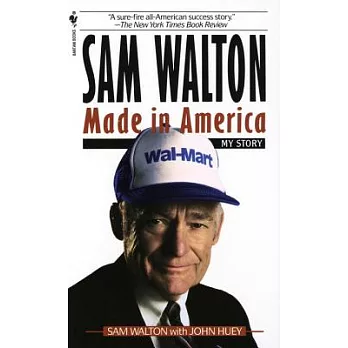
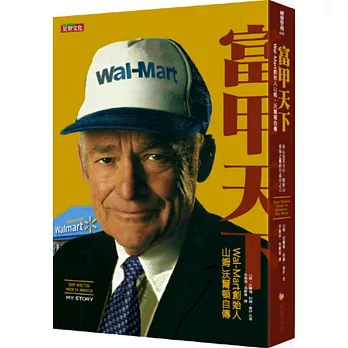
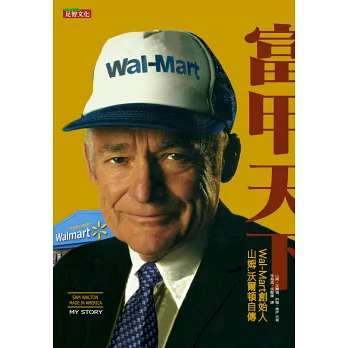
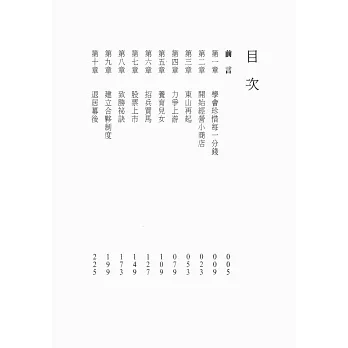
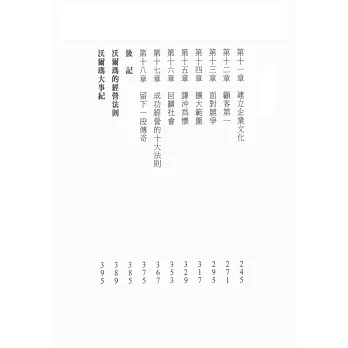
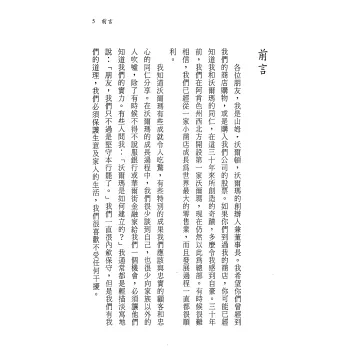
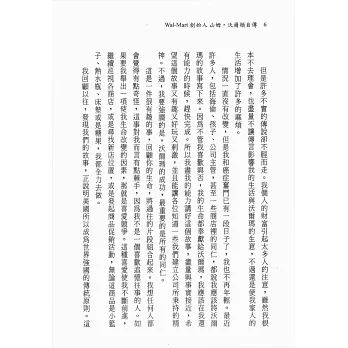
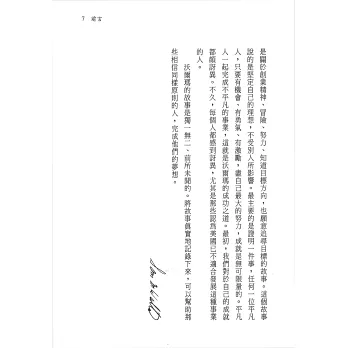
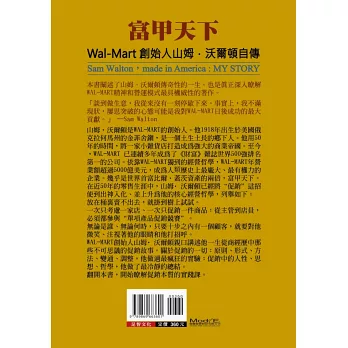

沒有留言:
張貼留言
注意:只有此網誌的成員可以留言。